I have so few quality images of stilts in flight I could count them on the legs of my tripod. But now I’d need an octopod just to count the nice flight images I captured yesterday of this single bird.
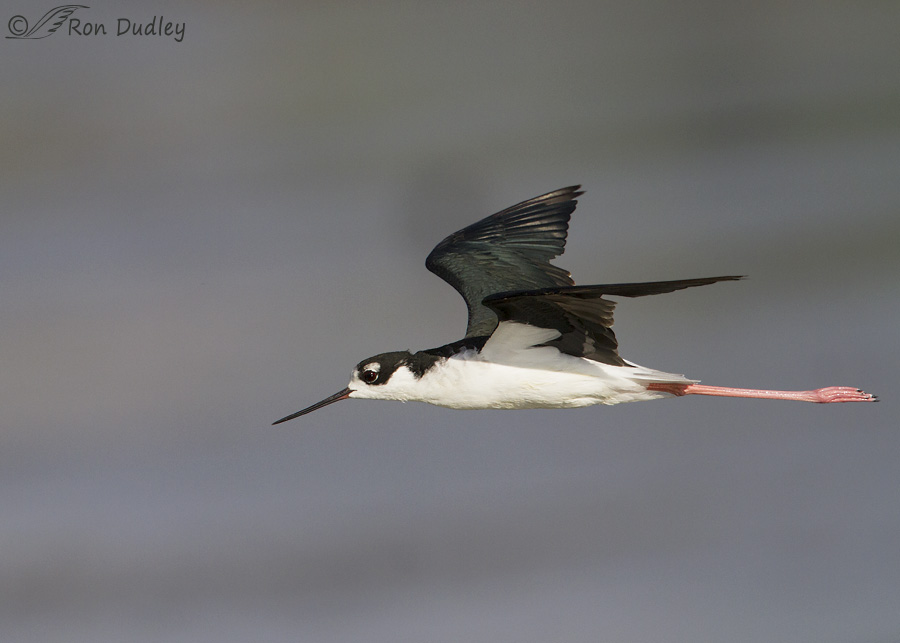
1/4000, f/6.3, ISO 500, Canon 7D, Canon EF 500mm f/4L IS II USM + 1.4 tc, not baited, set up or called in
Because of their swift, erratic flight I’ve found it to be extremely difficult to photograph Black-necked Stilts in the air but yesterday morning at Bear River Migratory Bird Refuge I got lucky with this bird.
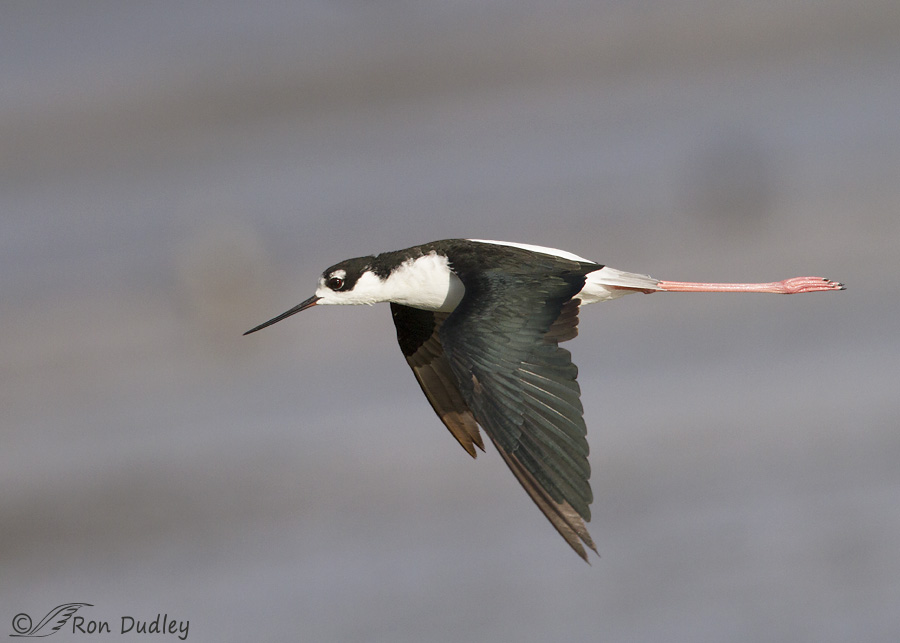
1/4000, f/6.3, ISO 500, Canon 7D, Canon EF 500mm f/4L IS II USM + 1.4 tc, not baited, set up or called in
I locked focus and stayed locked on for a series of ten images as the bird passed by me over the water. In two of those images I clipped body parts so I haven’t included them here.
I was a little surprised to see that the outer two primaries of this bird were brown instead of black like the rest (but then I’m no plumage/molt expert…).
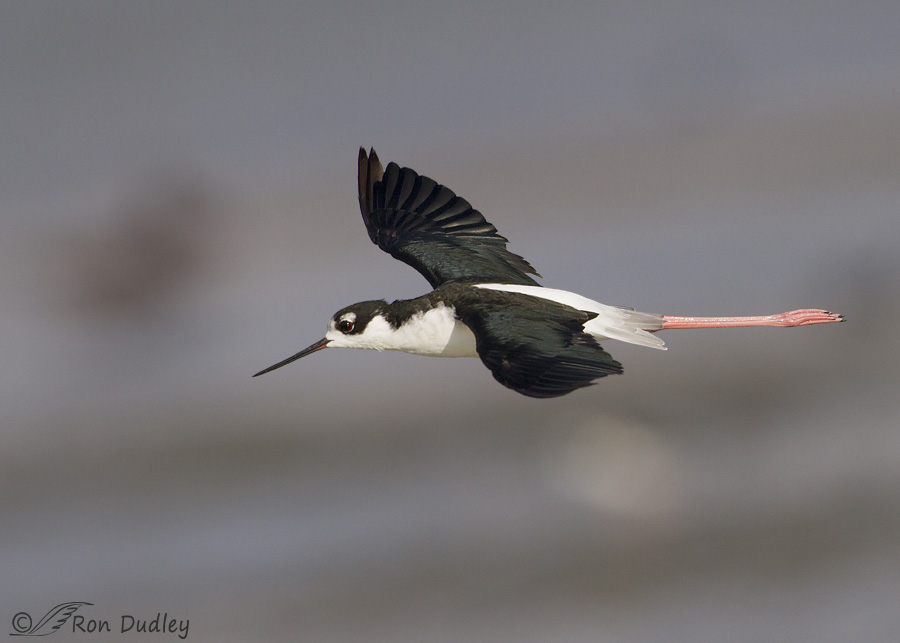
1/4000, f/6.3, ISO 500, Canon 7D, Canon EF 500mm f/4L IS II USM + 1.4 tc, not baited, set up or called in
It was flying into a moderate headwind and that slowed the bird down and made it a little easier for me to maintain focus. Wind can be a pain for bird photographers but in this case I think it was my friend.
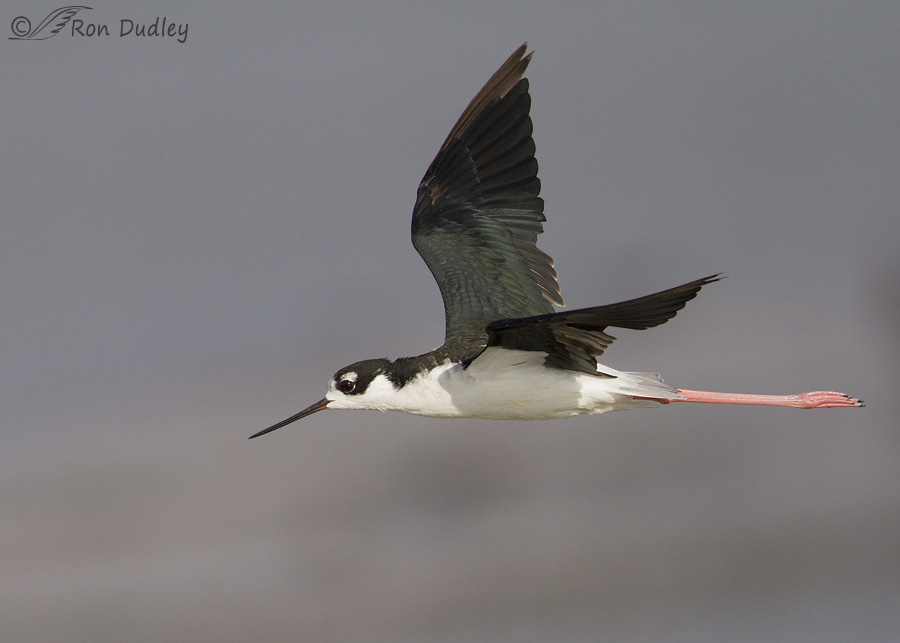
1/4000, f/6.3, ISO 500, Canon 7D, Canon EF 500mm f/4L IS II USM + 1.4 tc, not baited, set up or called in
Because some of the wing feathers are tipped with white I believe this is an immature bird.
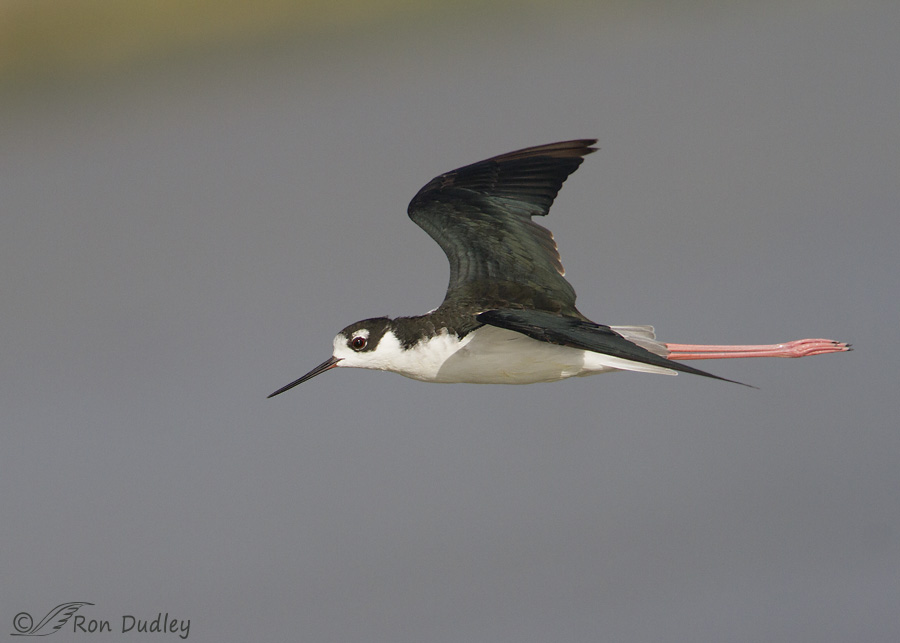
1/4000, f/6.3, ISO 500, Canon 7D, Canon EF 500mm f/4L IS II USM + 1.4 tc, not baited, set up or called in
Beginning with this image the stilt turned ever so slightly toward me and I believe the better eye contact that provided engages the viewer more effectively.
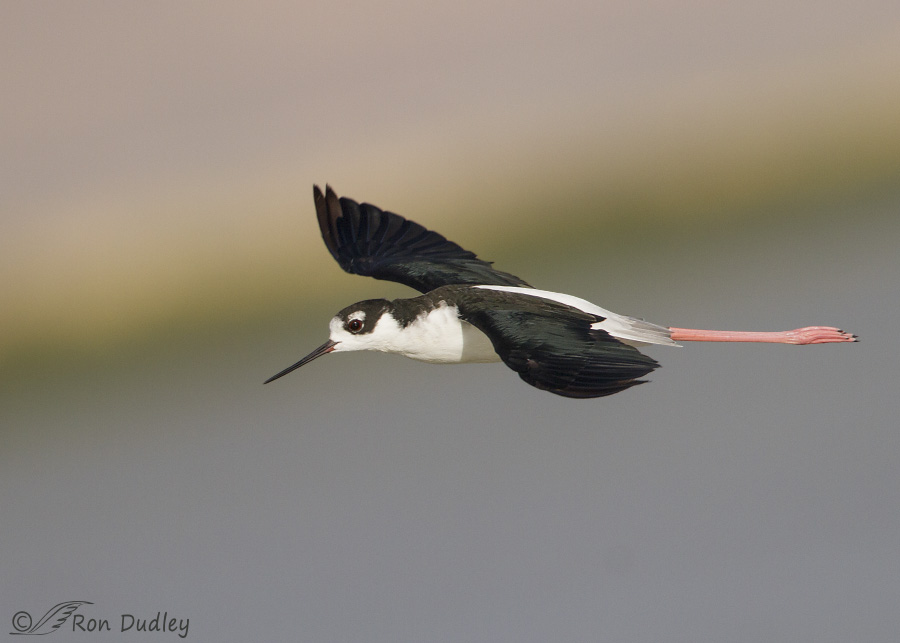
1/4000, f/6.3, ISO 500, Canon 7D, Canon EF 500mm f/4L IS II USM + 1.4 tc, not baited, set up or called in
Here an oblique patch of vegetation on the water entered the frame and since it somewhat resembles a horizon line it might imply that the photo needs leveling. Doing so would tilt the flight angle of the bird unrealistically so I didn’t rotate the image.
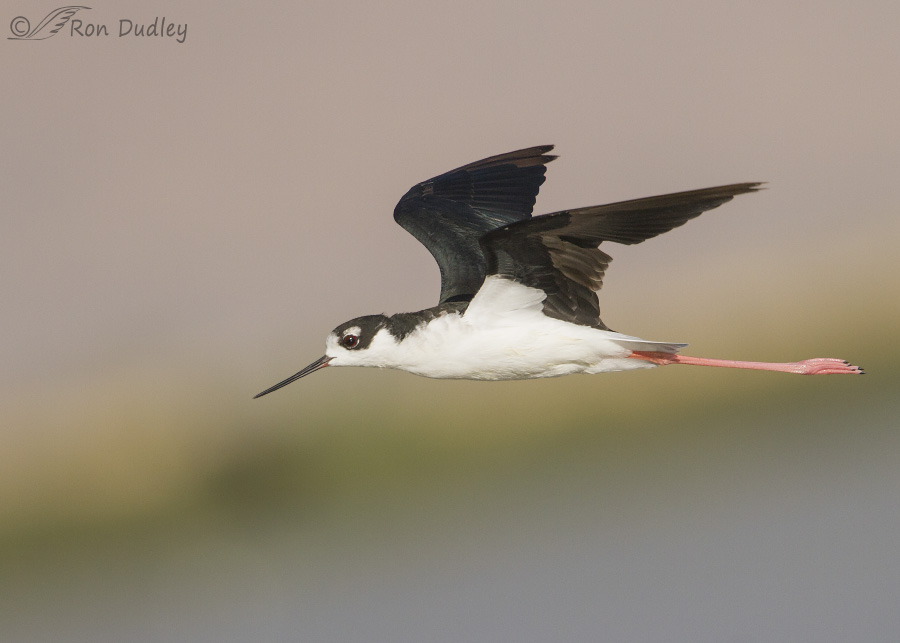
1/4000, f/6.3, ISO 500, Canon 7D, Canon EF 500mm f/4L IS II USM + 1.4 tc, not baited, set up or called in
I quite enjoy the somewhat unusual background layering in this shot.
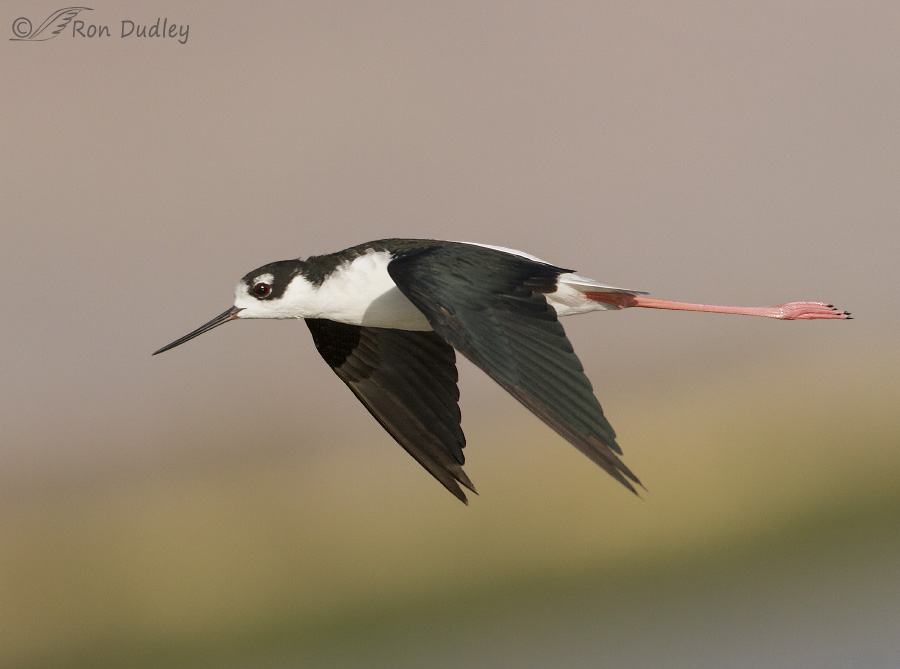
1/4000, f/6.3, ISO 500, Canon 7D, Canon EF 500mm f/4L IS II USM + 1.4 tc, not baited, set up or called in
In this final image I didn’t have quite as much room in front of the bird as I’d like for ideal composition but I decided to live with it and not add canvas on the left.
I was very pleased to get this series, especially since I was using my older, slower-focusing Canon 7D. Yes, my 7D Mark II is in the shop again because the first “repair” didn’t fix my focusing issues. Grrr…
Yesterday at the refuge was both interesting and challenging. It was “birdier” out there than I’ve seen it for a very long time but it was a blustery, windy, partly cloudy morning and the lighting sometimes changed several times per minute. I hope I didn’t wear out the dials and buttons on that old 7D as I tried to maintain proper camera settings under those volatile lighting conditions…
Ron
A heads up for local birders and bird photographers. Beginning today the auto tour route at Bear River MBR will be closed to visitors every day through August 18 from sunrise to 4pm due to a dike restoration project. Visitors can still drive the loop from 4pm till dark.


For what it’s worth, Ron, I like #2 and the last photo best, but these are all good captures!
Those straight legs and pointed toes reminded me instantly of the wonderful gymnasts performing at the Olympics with their perfect aerodynamic positions as they fly through the air. So much work goes into making the human body do what birds do naturally. Bravo, birds and gymnasts!
The 5th and 6th images are my favorite as the stilt’s eye is a clearly seen.
Power, grace, style. By the truckload.
I am amazed at how straight those legs are. Which would require effort.
Sigh on the camera front. Intermittent problems are the worst. And outsuck Dyson.
“Intermittent problems are the worst”
That’s for sure, EC. Sure makes it hard to track down.
An interesting series…those long rubbery-looking legs remind me of pink liquorice “Twizlzlers”….they don’t even seem to have joints. I like their happy-looking little faces….
Patty, the joint is right under the tip of the tail but it’s hard to see in the shadow.
These birds often cross those long legs in flight (comfort?) but not this time…
These are beautiful shots. The bird has such an intent in it’s eye. They certainly get long and lean in flight!
They do have that streamlined look, don’t they, Carol. Those incredibly long legs sticking out behind them only contributes to that perception.
Excellent flight shots Ron, sharp as a tack!
I’m wondering whether the brown portion of the primaries suggest age of the bird.
I would think sun bleaching would be scattered over the bird rather than two leading edge primaries.
Just a guess.
Could be, Dick. I know more about bird behaviors than I do about their plumages and molts.
Dick my remark was limited to the wing feathers. You’re right that the bleaching effect is scattered over the bird on the rest of its body.
Since molting is a process so that the bird can continue flying, I suggested it MIGHT be due to the molt given the early August time frame, which should indicate the molt is nearing completion. And IF this bird is going about the molt in an orderly process molting from the middle of the wing forward (upward) for the primaries and from the middle of the wing toward the body (secondaries), it wouldn’t be surprising to me to have that much of a color variation between the old and new feathers. The bleaching from sunlight and overall wear is definitely noticeable in *my* redtail and Harris’ hawk (who are no more MINE than the air I breathe) and they don’t have the same 24/7 exposure to the elements that a wild bird would have. But that’s just a suggestion IF this is what’s going on.
Ornithologists and falconers number the feathers differently, but I can never remember who starts where. One of us numbers from the tip of the wing inward (for primaries) and the other, the other way around.
OH I just noticed–check out the third primary from the outward tip of the wing! That looks like it might be a growing feather on both wings (indicating that orderly fashion thing, too).
Holy cr-p, Ron!! I’ve been lucky enough to see Stilts out in the wild (at Green Cay) but where they hang out is way beyond my camera lens reach. I’ve never seen them n flight so this series just blows my mind. I think Stilts are such a dramatic looking bird just like the Western Grebes you shared with us yesterday. So glad you were so successful with your flight shots since we get to enjoy them too!!!
We have lots of stilts here in the summer, Jo Ann, but they sure are a challenge to photograph in flight.
I also meant to tell you that my favorites are the 2nd and the last captures – I love the photos with the Stilt’s wings on the down beat!
This is a great series. I’ve seen Black-necked Stilts in the wild before, but I’ve never seen one in flight, so these shots are special. With regard to leveling the photo that appears horizontally challenged, that wouldn’t make sense at all because the bird is at the same angle in all the photos and is obviously fling at the same level throughout. I’m really good at taking horizontally challenged photos, so it’s easy to recognize ones that aren’t… 😀
“I’m really good at taking horizontally challenged photos”
So am I, Susan, especially with flight shots. In the excitement of the moment I usually don’t pay much attention to how level I’m holding my camera. One of the advantages of shooting from a tripod is that tilted images don’t happen so often but I seldom use my tripod.
Wow! Sensational Ron!
Charlotte Norton
Thanks, Charlotte.
Insert my standing “Oh WOW!” plus a string of superlatives here.
I wonder if the brown primaries are more an issue of the molt? Black feathers tend to bleach out over a year of exposure to the sun. There’s also the issue that the tertiaries are more brown than black.
I’ve heard tell that some birds accomplish their molt in an orderly fashion, dropping and replacing feathers in a predictable pattern, one set of feathers after the other. A falconer friend of mine who flies goshawks swears that’s true, however, Mariah (female redtail) and Jack (male Harris’ hawk) don’t seem to have gotten that memo and molt far more haphazardly, even approaching the wily nily construct. This stilt might very well agree with my falconer friend. But what do I know?
Laura, I have no idea why this bird’s outer flight feathers are brown. I don’t see any mention of it in BNA Online. I know that adult females have brownish backs but this was something I’d never noticed before. Probably isn’t unusual, just new to me.
What I see with Mariah and Jack is that the new feathers coming in are several shades darker than the old ones that have been subjected to sunlight for an entire year. IF that bird is doing an orderly molt, which some people tell me birds do (except for Mariah and Jack), that MIGHT explain the lighter feathers given the early August time frame, which indicates getting near the end of the molt. HOWEVER, what do I know? Just a thought. And again, there’s also the issue of the tertiaries.
Ron, check out the third primary from the outward tip of the wing! That looks like it might be a growing feather on both wings (indicating that orderly fashion thing, too).
Yeah, I had noticed that feather too, Laura (in the second photo).
Awesome series. !!!!! I have yet to master a perfect picture of a bird in flight with my 500./clipped body parts out of focus. Perched birds are awesome. . .. Your a gold member of canon so why not sent it to them???
Flight shots take lots of practice, Marina. Keep at it and I’m confident you’ll get there!
Sending it to Canon might be my next option and it may be that I should have done that in the first place. Hindsight…
Cool! How streamlined they get in flight!:) It is interesting that the 2 primaries are a different color. At least you still have the Canon 7D for back up! Better than no camera at all for sure. Hope they figure out and fix the Mark II. 🙁
Thanks, Judy, I do too. I should find out something about it today, one way or another.
I actually still like both of my 7D’s a lot. I just wish they focused a little faster and had a faster burst rate.